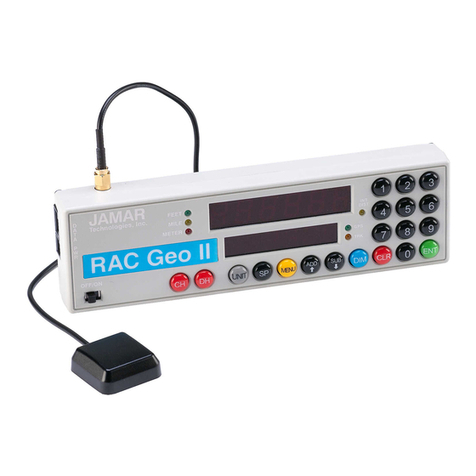
Using Your New JAMAR Radar Recorder – 9 Steps from Start to Finish
You’ve just received a big box (or boxes) with the JAMAR Radar Recorder and all the accessories that go with it. So right
about now you’re probably thinking, ‘Where do I start?’ Don’t worry, that’s what this guide is for. We’ll take you from un-
packing the equipment to producing reports in 9 easy steps.
Step 1 – Unpacking and Checking Your Equipment
First, let’s unpack everything and make sure you got everything you were supposed to get. With
most orders there should be a single sheet of paper that shows the items that are part of your Ra-
dar Recorder kit and the quantity of each item that you should have received. Check the contents
of your box\boxes against this sheet. If anything is missing, let us know.
Step 2 – Setting up Your Computer
To program the Radar Recorder, and to download data from it, you’ll use a computer running the TRAXPro software.
• If your kit includes a laptop, the TRAXPro software has been pre-installed for you and you can skip to Step 3.
• If you purchased the TRAXPro software, but are using your own computer, install the software using the CD provided.
• If you are using your own computer and already have TRAXPro, check to see that you are using the latest version and
update it as necessary. The latest version of TRAXPro can be downloaded at www.jamartech.com/updatetraxpro.
Step 3 – Selecting an Installation Site
Now that we’ve unpacked everything and setup the computer, we’re ready to select a site
for doing some data collection. When choosing a site to install the Radar Recorder, keep in
mind that the Recorder will need to be mounted to a pole (typically a utility pole) or tree, so
the site will need to have one of these available for use.
The Radar Recorder should not be installed:
• At an intersection.
• Near where vehicles are likely to park.
• Where the radar head is at an extreme angle.
• Where pedestrians are likely to be crossing.
• Where the Radar’s “view” is obstructed.
For the best results, the installation should be:
• At a 45 degree angle to the flow of traffic.
• Six to ten feet back from the road.
• At least six feet above the ground.
• Where the far lane is no more than 50’ away.
• Where traffic is free flowing.
QUICK
START
Insert the pegs on the back of the Radar Recorder’s mounting bracket into the large holes of the pole mounting bracket
and slide the Radar Recorder down to secure it in place.
Step 4 – Installing the Radar Recorder
Once a site has been selected, the Radar Recorder can be easily mounted using the installation kit. For the most
accurate results, install the mounting bracket at a 45 degree angle to the traffic.























